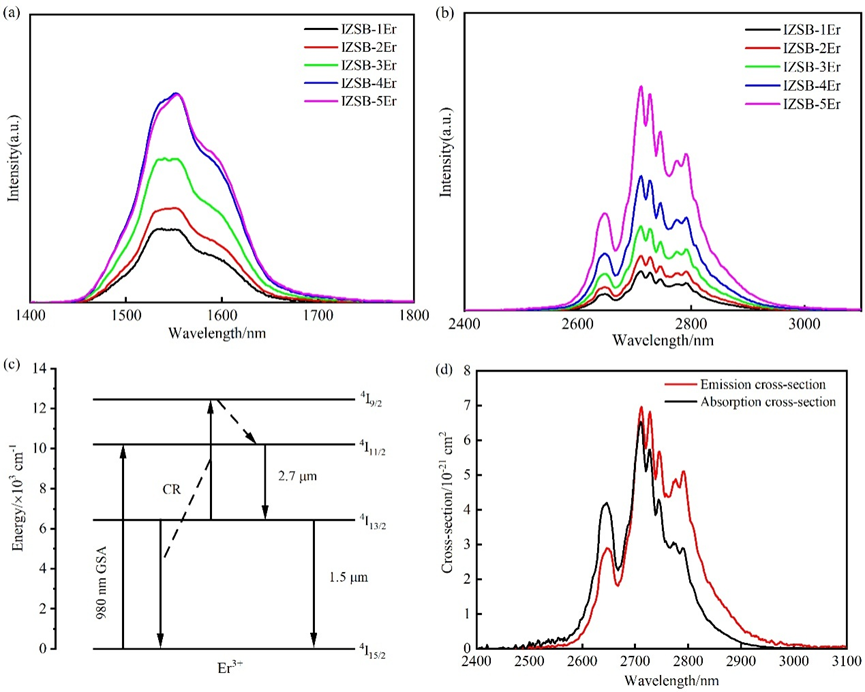The development of mid-infrared laser is of great significance to medical and other fields. Among them, fiber laser has received extensive attention, and laser glass as the core material of mid-infrared fiber laser has a great influence on the further development of its performance. At present, the common 2.7 μm fiber laser usually uses the form of erbium doping, which involves the transition between erbium ion 4I13/2 and 4I15/2 energy levels. This process is easily affected by the non-radiation transition, so it has a high requirement on the matrix glass.
Fluoride glass is a potential fiber matrix material with low phonon energy. Currently, the common ZBLAN (ZrF4-BaF2-LaF3-AlF3-NaF) glass is relatively mature, but there are also problems such as poor resistance to deliquescence and poor thermal conductivity. By contrast, fluoroindate glass is very attractive because of its lower phonon energy, higher infrared transmittance, wider transmittance ranges and better resistance to hydrolysis.
A research team led by Researcher SHE Jiangbo from Xi'an Institute of Optics and Precision Mechanics (XIOPM) of the Chinese Academy of Sciences (CAS) reveals the spectroscopic properties of Er3+-doped fluoroindate glasses. The result was published in the Journal of Rare Earths.
In their study, they tested samples of fluoroindate glass with different erbium-doped concentrations prepared in a glove box. The phonon energy of fluoroindate glass is 510cm-1, which is lower than that of ZBLAN (580cm-1) and fluoroaluminate glass (615cm-1).
Under the excitation of 980nm, they obtained strong luminescence of 1.5 μm and 2.7 μm in the mid-infrared region. With the increase of doping concentration to 5mol%, the luminescence intensity gradually increases, and then with the increase of doping concentration, the luminescence intensity does not increase, which is caused by the fluorescence quenching caused by the increase of concentration.
Fluorescence lifetime and stimulated emission cross section are the key indicators to determine whether the gain material is suitable for laser output. After testing, the maximum fluorescence lifetime of fluoroindate glass was found to be 7.09ms at 2mol% erbium doping. This result is higher than ZBLAN glass (6.49ms).
They calculated the emission cross-sectional area at 2.7 μm and the maximum excited cross-sectional area is 6.95×10-21cm2 at 2mol% erbium doping. This result is also higher than ZBLAN glass.
Their research shows that fluoroindate glass has the advantages of low phonon energy and strong luminous cross section. It is of great significance to the further development of mid-infrared fiber laser.
 Quantum efficiency (η) of the 2.7 μm emission from IZSB-xEr samples. (Image by XIOPM)
Quantum efficiency (η) of the 2.7 μm emission from IZSB-xEr samples. (Image by XIOPM)
Download: